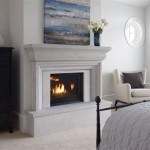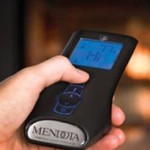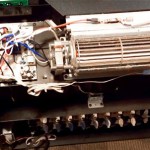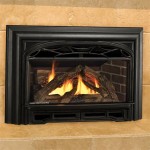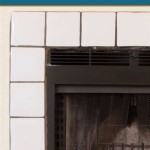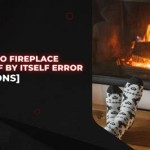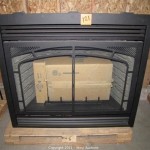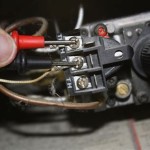Understanding Gas Fireplace Insulation: Key Considerations for Efficiency and Safety
Gas fireplaces are a popular heating appliance, offering both aesthetic appeal and supplemental warmth. However, like any heating system, their efficiency can be significantly impacted by insulation. Effective insulation around a gas fireplace ensures heat is directed into the living space rather than escaping into surrounding walls, ceilings, or exterior environments. This ultimately reduces energy consumption and improves the overall performance of the fireplace.
Proper insulation also plays a crucial role in maintaining safety. High temperatures generated by the fireplace can pose a fire risk if combustible materials are located too close. Insulation acts as a barrier, minimizing heat transfer to these materials and reducing the likelihood of ignition. Therefore, understanding the principles of gas fireplace insulation is essential for homeowners seeking to maximize efficiency, minimize energy costs, and ensure a safe operating environment.
The Importance of Proper Gas Fireplace Insulation
The primary function of insulation around a gas fireplace is to control heat flow. Without adequate insulation, heat readily dissipates through the surrounding structure. This "heat loss" reduces the fireplace's ability to effectively warm the desired area. The furnace or other heating system must then work harder to compensate for the lost heat, leading to increased energy consumption and higher utility bills.
Furthermore, heat loss can create temperature imbalances within a home. Rooms further away from the fireplace may remain cooler, while areas directly adjacent to the fireplace become excessively warm. This discrepancy can be uncomfortable and contribute to inefficient heating of the entire living space. Proper insulation helps to maintain a more consistent and comfortable temperature throughout the home.
Beyond energy efficiency, thermal insulation provides a critical safety buffer. Combustible materials, such as wood framing, drywall, and wiring, have ignition points that, when reached, can lead to a fire. The intense heat produced by a gas fireplace, particularly the flue and firebox, can potentially ignite these materials if they are located too close without proper protection. Fire-resistant insulation minimizes heat transfer, keeping the surrounding structure below its ignition point and significantly reducing the risk of fire.
Types of Insulation Suitable for Gas Fireplaces
Selecting the appropriate type of insulation for a gas fireplace requires careful consideration of factors such as R-value (resistance to heat flow), fire resistance, and compatibility with the fireplace's design and manufacturer's guidelines. Several insulation materials are commonly used, each with its own advantages and disadvantages.
Mineral Wool: Mineral wool, including rock wool and slag wool, is a popular choice due to its excellent thermal performance and inherent fire resistance. It is typically available in batts or rolls and is relatively easy to install. Mineral wool has a high R-value per inch compared to fiberglass, providing superior insulation in a smaller space. Its fire-resistant properties make it a safe option for use around heat-producing appliances like gas fireplaces.
Fiberglass: Fiberglass insulation is another widely used option. It is relatively inexpensive and readily available in batts, rolls, and loose-fill forms. While fiberglass offers decent thermal performance, it is less fire-resistant than mineral wool. When using fiberglass around a gas fireplace, it is crucial to ensure that it meets local building codes and is installed with appropriate fire-resistant barriers.
Ceramic Fiber Blanket: Ceramic fiber blankets are a specialized type of insulation designed for high-temperature applications. They are often used directly around the firebox of a gas fireplace to provide maximum thermal protection. Ceramic fiber blankets are extremely fire-resistant and offer excellent insulating properties, even at elevated temperatures. However, they can be more expensive than other types of insulation and may require specialized installation techniques.
Vermiculite: Vermiculite is a mineral that expands when heated, creating a lightweight, fire-resistant insulating material. It is often used to fill voids and irregular spaces around gas fireplace components. Vermiculite is non-combustible and provides effective thermal insulation. It is particularly useful for insulating areas that are difficult to access with other types of insulation.
Key Considerations for Installation and Safety
Proper installation is paramount to the effectiveness and safety of gas fireplace insulation. Following the manufacturer's instructions and local building codes is crucial. These guidelines often specify minimum clearances between the fireplace and combustible materials, as well as the required R-value and fire resistance of the insulation.
During installation, it is essential to ensure that all seams and gaps in the insulation are properly sealed to prevent air leakage and heat loss. Sealing can be achieved through the use of fire-resistant caulk or tape. Pay particular attention to areas around the flue and firebox, as these are the hottest parts of the fireplace.
Furthermore, it is vital to inspect the insulation regularly for any signs of damage or deterioration. Over time, insulation can settle, compress, or become damaged by moisture or pests. Damaged insulation should be replaced promptly to maintain its thermal performance and fire resistance. A professional inspection by a qualified technician is recommended periodically to ensure that the insulation is in good condition and that the fireplace is operating safely.
When choosing insulation, verify that it is designed for high-temperature applications and intended for use with gas fireplaces. Some insulation products may release harmful fumes when exposed to high heat, which can pose a health risk. Always prioritize safety and choose materials that meet industry standards for fire resistance and thermal performance.

Walls Behind Fireplaces Building America Solution Center
Gas Fireplace Venting Explained Heat Glo
Insulating Around Direct Vent Fireplace Hearth Com Forums Home

Minimizing Heat Loss Through Fireplace Framing Greenbuildingadvisor

The Foil Faced Insulation Behind This Fireplace Provides An Air Barrier And Thermal Shield Building America Solution Center

Mold From Now Need To Insulate Properly Greenbuildingadvisor

Fixing A Draft Fireplace Doghouse Kickout Diy Home Improvement Forum

Insulating A Direct Vent Gas Fireplace Fine Homebuilding

Fireplace Cold Air Issues Www Mygasfireplacerepair Com

Fireplace Insulation Barrier Curtain Prevent Drafts Odors And Debris Cover For Reduce The Cost Of Heating Costs Com
Related Posts

